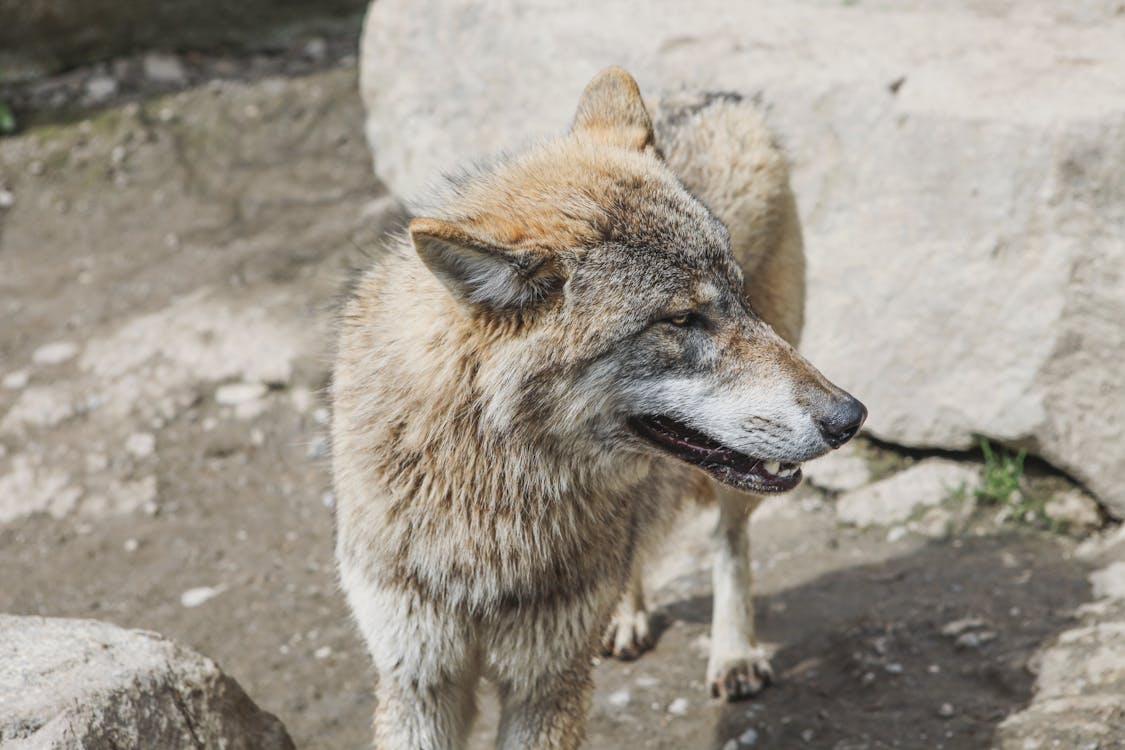Wolves are among the most intelligent creatures in the animal kingdom, exhibiting a wide range of cognitive abilities, especially in areas of problem-solving and complex social interactions. As apex predators, their survival hinges not only on physical prowess but also on sophisticated mental capacities. Key to their intelligence is the structure and dynamics of the wolf pack, a tight-knit unit that cooperatively works to achieve goals, making wolves remarkable examples of teamwork and social organization.
Problem-Solving Skills in Wolves
Wolves are known for their keen problem-solving skills, particularly when it comes to hunting, territory navigation, and group coordination. Studies have shown that wolves outperform many other animals, including domesticated dogs, in problem-solving tasks that require independent thinking and critical decision-making. For instance, experiments where wolves were presented with complex food puzzles revealed that they are more persistent and innovative than dogs. Their wild upbringing seems to promote this independence, as survival in the wild demands constant adaptation to changing environments.
Strategic Hunting
One of the clearest examples of wolf intelligence in action is their approach to hunting. Wolves hunt in packs, and this requires meticulous planning, strategy, and communication. They use coordinated tactics, such as flanking prey or creating distractions to outmaneuver them. Each wolf plays a specific role in the hunt, ensuring efficiency. Their ability to adapt strategies based on the type of prey, terrain, and other conditions showcases their ability to problem-solve in real-time.
Spatial Awareness and Navigation
Wolves are also known for their impressive spatial awareness and navigational skills. They are capable of remembering vast territories that can span hundreds of square miles, using environmental cues, landmarks, and even the stars to navigate. This requires a strong memory and cognitive mapping abilities, both critical for locating prey, avoiding danger, and leading their pack through complex landscapes. Their ability to recognize patterns in their surroundings also helps them anticipate the movements of prey and potential threats.
The Role of Pack Dynamics in Intelligence
Wolves live in highly structured social units, known as packs, where cooperation and hierarchy are central to survival. The intelligence of wolves is often magnified in the pack setting, where complex social dynamics influence decision-making, leadership, and conflict resolution.
Hierarchical Structure
At the heart of every wolf pack is a strict hierarchy, with an alpha male and female leading the group. This hierarchical structure is not rigidly imposed through aggression but maintained through subtle social interactions and behaviors that reflect intelligence. Alphas often lead by example and display a deep understanding of the strengths and weaknesses of each pack member. Beta wolves act as second-in-command, while omegas may serve as peacekeepers, reducing tensions within the group.
Each member of the pack contributes uniquely to the overall functioning of the group, with roles determined by personality and skill. The ability of wolves to recognize and fulfill these roles is a testament to their social intelligence.
Communication and Cooperation
Communication within the pack is essential for their survival and success. Wolves use a variety of vocalizations, body language, and facial expressions to convey information, including howls to signal locations, growls to display dominance, and play-bows to initiate social bonding. This sophisticated communication system allows them to coordinate their actions during hunts, protect their territory, and maintain order within the group.
Cooperation is another key element of wolf intelligence. Whether hunting or raising pups, wolves work together to achieve goals that would be impossible for an individual to accomplish. This cooperation is not driven by a mere instinctual reaction but by calculated collaboration, where wolves understand the benefits of working as a team. They even exhibit empathy toward injured or sick pack members, indicating a deeper level of social understanding.
Learning and Adaptation
Wolves are also highly adaptive creatures, capable of learning from their experiences and from observing others. Young wolves learn the skills they need to survive by watching older, more experienced pack members. This learning is not purely imitative but involves understanding why certain behaviors are successful and how they can be modified to suit different circumstances. Such flexibility in learning shows that wolves possess a type of intelligence that extends beyond rote instinctual behaviors.
For example, wolves in Yellowstone National Park have demonstrated remarkable adaptability in adjusting to the reintroduction of bison as prey. Initially unfamiliar with hunting bison, wolves observed and gradually developed strategies over time, learning from trial and error how to effectively bring down this new and challenging prey. This adaptability is a hallmark of their problem-solving intelligence.
Wolves vs. Dogs: A Comparison in Cognitive Abilities
The cognitive abilities of wolves are often compared to those of their domesticated relatives, dogs. Interestingly, while dogs have evolved to be more attuned to human social cues, wolves retain a stronger sense of independent problem-solving. This difference has been demonstrated in various cognitive experiments, where dogs tend to look to humans for guidance when faced with a challenging task, while wolves continue to try different solutions until they succeed.
This suggests that while domestication has enhanced dogs’ abilities to collaborate with humans, it may have reduced some of the problem-solving independence seen in their wild counterparts. Wolves’ reliance on pack dynamics, rather than on humans, has fostered an intelligence that is both collective and individually resourceful.
Conclusion
The intelligence of wolves is an intricate blend of individual cognitive abilities and the collective power of the pack. Their capacity for problem-solving, social organization, and cooperation highlights not only their adaptability but also the sophistication of their minds. Through strategic hunting, complex communication, and a deep understanding of social roles, wolves exemplify how intelligence and social dynamics are intertwined in the animal world. As apex predators and pack animals, wolves rely on these skills for survival, offering valuable insights into the nature of intelligence in the wild.

